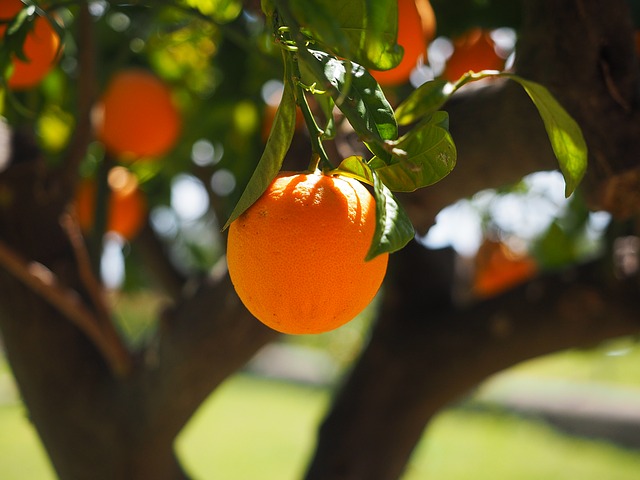April 24, 2017
Milltrust Agricultural Investments (MAI) announced the acquisition of Cottrell Farms – a collective of citrus, avocado, and wine and table grape orchards located in the Sunraysia region of Victoria, Australia, for an undisclosed amount.
The acquisition was made through the firm’s MAI Australia Buy & Lease Fund which was launched early last year. Subsequently, in March 2016, Milltrust announced that The Royal Borough of Windsor and Maidenhead (RBWM), on behalf of the UK’s Berkshire Pension Fund, had committed £30 million to the Milltrust Agricultural Investments New Zealand and Australia Buy & Lease Farmland funds.
The Buy & Lease strategy is designed to be open ended with a minimum subscription period of 10 years. The funds will acquire cashflow-positive farms and farmland assets, including permanent crops, arable, and pastoral farmland, which are then leased to experienced operators across the focused geographical regions of Australia and New Zealand with the goal of generating annual lease income of between 5 and 6 percent with an additional expected (real) annual capital appreciation of at least 5 percent.
“Investment in agriculture as an asset class can provide significant benefits including income generation, inflation protection and exposure to the very real themes of global food demand and land scarcity,” said Griff Williams, CIO of Milltrust Agricultural Investments, last year upon the fund’s launch. “RBWM has shown leadership in allocating to this asset class and Milltrust looks forward to deploying its collective expertise and disciplined investment process to manage the assets.”
The Cottrell farms encompass four adjacent properties including 200 hectares planted in a range of premium quality citrus varieties, and a smaller area planted in avocados and table and wine grapes. All plantings are relatively young, ensuring a decades-long term of expected output, and consist of the latest and newest licensed varieties that are being targeted to both Australia’s domestic market as well as rapidly growing Asian markets.
Since the acquisition, MAI has made further investments in improvements to the properties including the construction of a cool room and a packing shed. These additions will work to enable pre-cooling of fruit harvested from the field, to increase distribution capacity, and to ensure compliance with stringent exportation regulations.
Furthermore, there are an additional 40 hectares of new plantings currently being planted that will be established for the coming season.
Through the deployment of capital into citrus, avocado, and wine and table grape production, Milltrust is tapping into three segments with attractive narratives.
Avocado production in Australia has seen steady increases year on year, with production in 2015/16 totaling just under 67,000 tons – 16 percent higher than 2014/15 which saw production of just under 58,000 tons, and reaching a value of $460 million, 30 percent higher than the year before, according to Avocados Australia. Exports have likewise seen impressive growth – increasing from approximately 1,750 tons in 2013/14 to approximately 2,750 tons in 2015/16; and rounding out industry projections, by 2025, Avocados Australia expects the country to see its avocado output increase to 100,000 tons.
Meanwhile, Rabobank stated in its Wine Quarterly Report for Q4 2016, that Australia’s wine sector was entering a “red dawn”, driven by rising prices, especially for red wine grape varieties, constrained global production, and the depreciation of the Australian dollar resulting in a rally of appreciation in the near term.
“Fortunately, most of the market developments that saw wine grape prices bottom out in 2011 are no longer at play, and we are starting to see sentiment in the industry recover from a time when the national average wine grape price more than halved to A$413 per tonne [sic],” said Marc Soccio, Rabobank senior analyst.
Outlook for the industry is bright coming into 2017, based on a rebounding in the Chinese market – however, where once Chinese buyers focused on premium selections, demand is shifting toward lower priced wines, which may very well translate to growth for commercial red wine grapes.
Citrus is another smart buy-in as the segment is the largest exporter of fresh fruit for Australia. Recently improved access to water for irrigation is expected to support the industry moving forward, according to the latest Global Agricultural Information Network (GAIN) report issued by the U.S. Department of Agriculture (USDA) on December 12, 2016.
Production of fresh oranges topped 470,000 tons in 2016/17, while exports of fresh oranges are expected to reach 230,000 tons for the season. With newly minted free trade agreements with China, Japan, and Korea, the industry has a bright demand outlook. And given the fact that Australia is a counter-cyclical supplier to northern hemisphere markets including Indonesia, China, Japan, Korea, and the U.S., the industry is well positioned to capitalize upon these advantages to foster growth.
-Lynda Kiernan
Lynda Kiernan is Editor with GAI Media and daily contributor to GAI News. If you would like to submit a contribution for consideration please contact Ms. Kiernan at lkiernan@globalaginvesting.com.

Let GAI News inform your engagement in the agriculture sector.
GAI News provides crucial and timely news and insight to help you stay ahead of critical agricultural trends through free delivery of two weekly newsletters, Ag Investing Weekly and AgTech Intel.




